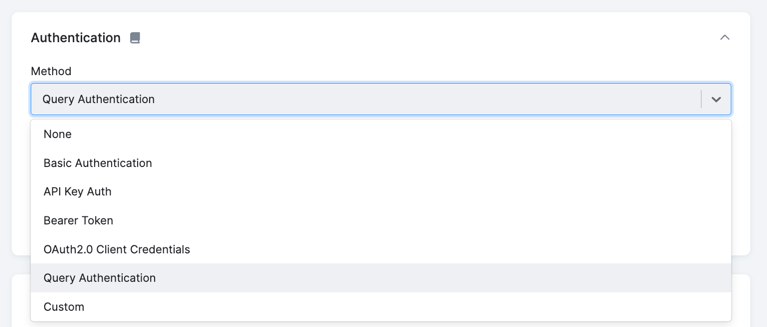Authentication
To configure your first Generic Extractor, follow our tutorial. Use Parameter Map to help you navigate among various configuration options.
Unless the API you want to extract from is completely public, you need an authentication and possibly authorization method. There are many authentication methods available. Generic Extractor supports the following ones:
- URL Query authentication — sends credentials in the URL of each API request.
- Basic HTTP authentication — sends credentials in the
Authorizationheader of each API request. - Login authentication — obtains temporary credentials (token) by logging in and then sends them in the URL or headers of each API request.
- OAuth 1.0 authentication — authenticates with OAuth 1.0 scheme.
- OAuth 2.0 authentication — authenticates with OAuth 2.0 scheme.
- OAuth 2.0 Login authentication — crossover between the OAuth 2.0 and Login authentication.
NOTE: The UI also offers additional authentication methods that are implemented as a template:
Use the authentication method supported by the target API. If the API supports multiple authentication methods, the URL Query and Basic HTTP methods are the easiest to set up but also the least secure.
User Interface
Most of the authentication methods are available via the user interface:

An example authentication JSON configuration looks like this:
{
"api": {
"authentication": {
"type": "query",
"query": {
"apiKey": "2267709"
}
}
},
"config": {
...
}
}OAuth
Generic Extractor also supports authentication using the OAuth standard. Due to the principles of OAuth, this authentication method is supported only for published components. The OAuth protocol defines a scheme in which credentials are exchanged between the following:
- Consumer (Generic Extractor)
- Service provider (the API itself)
- End-user (the person authenticating against the API)
The OAuth specification defines what kind of information is exchanged in which steps. It is not a precise
specification and leaves quite some freedom for implementation. Also, there are two versions of
OAuth — 1.0 and 2.0. They are completely incompatible (both the authentication steps and the exchanged fields differ).
Generic Extractor supports both OAuth 1.0
and OAuth 2.0. If you are developing a new component using Generic Extractor
templates and want to use and test OAuth authentication,
inject the necessary credentials simply by passing them
in the configuration’s authorization property.
